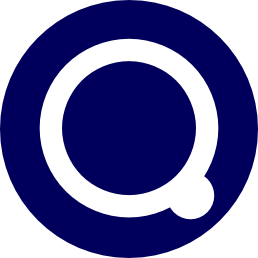Doing Qualitative Research: Design and plan
Setting up
I know you want to just get out there and do the research, but setting things up carefully and with the right infrastructure and permissions in place can save you time and stress later in your project. We don’t expect you want to intentionally do poor research or harm, but there are important things to consider to avoid unintentional errors and make sound decisions quickly when you face choices later in your projects.
This module will help you think about your research, before outlining examples of formal plans or protocols you will need to produce your research. This will demonstrate your own competence, as well as meeting expectations around research integrity, further discussed in the modules 💭 Epistemology and Meta issues and 💻 Manage and handle data.
Design
This course is aimed at those undertaking qualitative research and using qualitative methods. It's important you chose qualitative methods because it is the right approach for investigating and exploring your research question, rather than because you don’t like numbers. Analysing qualitative data can be every bit as challenging as using numerical and statistical methods. Computer Aided Qualitative Data AnalysiS Software (CAQDAS) can't do the thinking for you, any more than a stats package can tell you the implications of a significant t-test.
“Qualitative research can help researchers access the thoughts and feelings of research participants, which can enable understanding of the meaning people ascribe to their experiences. While quantitative research methods can be used to determine how many people undertake particular behaviours, qualitative methods help researchers understand how and why such behaviours take place”.[1]
To understand more on choosing the right approach, read our blog:
Remember, “quantitative and qualitative approaches make different assumptions about the world, about how science should be conducted, and about what constitutes legitimate problems, solutions and criteria of ‘proof’.”[2].
You will learn more about research assumptions, ontology and epistemology in 💭 Epistemology and Meta issues.
Using practical frameworks to plan YOUR research
By now it should be apparent that before you gather any data you need to consider quite a few things. This next section provides some tools to assist you in planning your unique piece of research.
First, take a moment to think about what you need to have, know or do before you even get to gather any data.
What do you need to have, know or do before you even get to gather any data?
[Hint: what kinds of things might you find in a report appendix?]
- Make a list
- Discuss with colleagues
Socratic framework
There are many ways to address the question of what you need to have, know and do before you gather data, but I have two favourite frameworks. The first is a simple set of Socratics: Who, How, What, When, Where.
For example, if you think you will gather interview data (click on the model to view the example questions):
You might have noticed that one of the Socratics is missing - ‘Why?’. It’s all too easy to demand ‘Why?’, but it’s maybe a lazy question, more suited to primary school Q&A than a sophisticated academic invitation to explore or uncover. It can also seem a bit pushy and interrogating and so put people on the defensive and you might just elicit knee-jerk responses, like ‘I don’t know’. There are often better questions, such as ‘What led you to that decision? What do you think they were hoping to achieve by doing that? What was your motivation for that? However, when used sparingly and with care, it can be incredibly powerful.
This is just a list to get you started.
Why not make some notes or use the mind-map to record and extend your thinking. Add connections and ideas as you need. Use your list/map to discuss your plans with others as you need or are required.
A purpose framework
One excellent question to replace ‘Why’ is ‘What is the purpose?’. Or, if I’m planning, ‘What is my purpose?’ I call this the Purpose Framework (drawn from the work of the Anthropologist, Gregory Bateson[3], [4]). The central question of this framework is the very philosophical sounding ‘What is my purpose?’ However it can be applied practically to direct your effort. The things that you do in your project and the decisions you make should move your project towards your ultimate purpose, which may simply be to produce a project report on time, on budget, of sufficient quality to meet expectations, and done with sufficient care to have done no harm. But we are often motivated by more than such utilitarian aims, and are presented with choices that are far from simple. So this framework adds some context to prompt you in thinking more specifically about your context and the context of your research participants.
Click on the model to see the example questions:
Take a moment to add to your earlier notes and mind-maps.
You’ll see these frameworks again in the module 🎙️ Gather data.
Formal requirements in design and planning
Even though many qualitative projects are exploratory, you will have to have some kind of plan and sense of the choices and limitations you will face, as well as the methods you plan to use. Qualitative research is iterative and your plans will develop as you go through the cycle of research. It is important that you understand that as the process is iterative, changes will occur. However this is not an excuse for making no plans at all: you need a rationale for what you are doing. You may already have done some of this work as part of a research proposal before being accepted on to a programme of study, or as part of an application for funding. However once proposals are accepted, much greater depth is required to demonstrate competence and integrity. Qualitative research projects will typically need:
- Project rationale
- Design protocol - outlining methods of data collection and analysis, stages of the research or decision points and timings.
- Ethical review and risk assessments
- Data management plan
These may be written as separate documents or combined under single headings. This will largely depend upon the requirements of your department, the norms of your discipline, your institution, and/or funding the funding body. How precise you need to be will be determined by ontological perspective, as well as local policy, regulatory requirements and the customs and needs of your participants and stakeholders.
Optional materials and resources
Optional blogs
If you need to understand more about the kinds of data you could use, read:
Further reading: Research pre-registration
The requirement to pre-register research designs is designed to prevent distortion of research findings, especially in publication/research outputs. It is becoming more common in disciplines where null hypotheses are posited, and where researchers have noticed a bias in reporting towards positive results e.g. in clinical and technical research areas. Qualitative research is not generally viewed in this way. However pre-registration is an important discussion across research diciplines, so you may wish to discuss the implications for your project with your project supervisors. However it is far from established practice for even doctoral students at this point in time.
You can read more here:
Where next?
Your thinking in this module might have alerted you to the many processes and structures that are involved in the research, such as ethical permissions. But be assured that the work that you do in designing and setting up your project will pay dividends when it comes to the work you will do for ethical or any kind of panel approval.
We suggest you continue this course with 💭 Epistemology and Meta issues.
Tell us what you think!
We'd love to hear from you so we can make this course as useful as possible. If you'd like to leave feedback, suggestions or comments, please use the button below.
Fill out our surveyCitations
[1] Sutton, J., & Austin, Z. (2015). Qualitative Research: Data Collection, Analysis, and Management. The Canadian journal of hospital pharmacy, 68(3), 226–231.
[2] Cleland, J. (2017). The Qualitative Orientation in Medical Education Research. Korean Journal of Medical Education, 29(2), 61–71.
[3a] Gregory Bateson. (2023). In Wikipedia.
[3b] Goodbun, J. (2022). How Many Ecologies? From Bateson to Guattari and Back Again. In Relating Systems Thinking and Design. [Symposium]. Brighton, UK.
[4.] Palmer, H. (2022). Systemic Thinking and the Myth of Power. Feedback: Journal of the Family Therapy Association of Ireland. 2022, 32–41.
How to cite this course
A simple bibliographic reference (where you are not citing anything in particular from the course) can be given as:
- Gibbons, C.A. (2024) Doing Qualitative Research. Quirkos.com https://www.quirkos.com/curated-course/index.html
However, if you are citing or quoting from the course content then the full URL should be given in the Reference section. E.g. If you want to cite the text or exercises around Ethics, the citation would be:
- Gibbons, C.A. (2024) Doing Qualitative Research. Quirkos.com https://www.quirkos.com/curated-course/epistemology.html#EthicalReview
Click here for more information on how to cite resources from Quirkos.
Try today!
Ready to give Quirkos a try? Register for a free 14-day trial of Quirkos today,
with no restrictions on features or
projects.with no restrictions on features or
projects.
Want to learn more? Read more about our features or see Quirkos in action!



